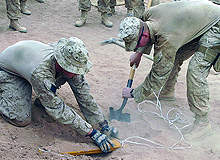Share this article

Go deeper with GlobalData

Sign up for our daily news round-up!
Give your business an edge with our leading industry insights.
Bertram Beaulieu of the National Geospatial-Intelligence Agency tells us about promoting GEOINT within the industry.
